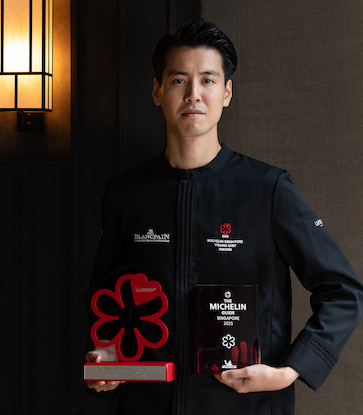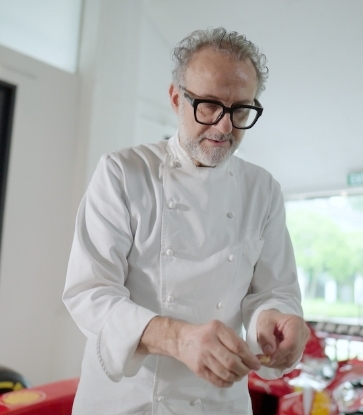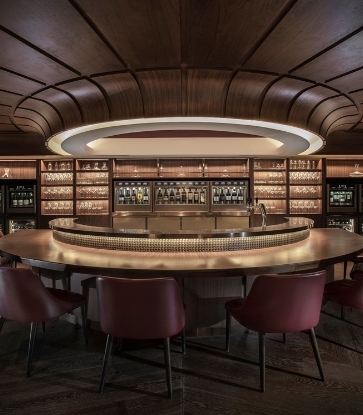Born and raised in rural Maine, USA, Lisa graduated from Colby College with a degree in English Literature and Performing Arts. Her wine career began by accident when, living as a struggling playwright in London after college, she stumbled into a job as the manager of a wine bar. She progressed through wine sales and marketing roles in the UK wine trade before moving to Tokyo as a wine buyer and wine educator.

Lisa began writing a column for Robert Parker's website, eRobertParker.com in 2008, and later that year she achieved her Master of Wine qualification and the Madame Bollinger Medal for excellence in wine tasting. She is now the editor-in-chief for Robert Parker's Wine Advocate and is also the author of Taste Like a Wine Critic: A Guide to Understanding Wine Quality, a comprehensive, straight-talking guide to answering the most important question that can be asked about wine: Is it good?
Dear Lisa,
How do I know which type of wine glass to use when serving different wines that I have lined up for my wine pairing dinner party this weekend?
It’s no great secret that different sizes and shapes of wine glasses will change how aromas in wine are expressed and channeled to your nose and palate. And this alone can change your experience of a wine.
To better understand how the “magic” works, let’s start by imagining a wine glass – any glass – stripped bare of its brand, the trappings of its luxury (e.g. fancy packaging) and its varietal and/or stylistic “name”. What’s left?
For a start, it is a tool that allows us to drink wine from a vessel other than the bottle. This in itself heightens our experience of wine, regardless of the construction material. I have enjoyed many a fine bottle from “glasses” that were not even made of glass.

The production of glass dates back to Mesopotamian times, though it was not used to make wine “cups” until much later, probably in England around 1700 A.D. Long history aside, up until relatively recently wine glass designs went through a very, very long era of style over substance. Think back to the purely superficial nature of the old “Champagne coupe” fabled to have been modeled after Marie Antoinette’s breast or more recently those Libbey smoke-tinged, tumbler-straight wine glasses of the 1970s that my elders would roll-out for special occasions.
Following this, I suppose it was the ISO (International Organization for Standardization) glasses of my formative wine years that can be credited for kick-starting the movement to consider the finer functions of a wine “tasting” glass. But nowadays, the old work-horse ISO glass is considered passé amongst the wine cognoscenti, its size admittedly being far too small to reveal the subtler characters in wines, particularly when compared to the more generously endowed tulip shaped glasses of today.
When we move beyond the basic cup-for-sharing-grog concept and the fact that it is actually quite nice as well as informative to appreciate the wine’s color through the quaffing vessel, the tangible attributes of a wine glass mainly boil down to its size and shape.
Size does matter
The size will impact the amount of air to which the wine is exposed when performing the (sometimes habitual) act of swirling. Swirling the glass to expose more of the wine to air is important for volatizing aromatic compounds and making them detectable by the human nose. So the bigger the glass, the more surface area and therefore the more air exposure.
But bigger isn’t necessarily better and, as a cautionary note, there is a point of diminishing returns. For example, in the case of very delicate and nuanced wines (including most white wines with the notable exception of bigger, bolder Chardonnays) and especially older wines wine of a fragile nature, an overly large wine glass bowl can rapidly dissipate aromas that would be better preserved in a smaller glass. Conversely, a big, youthful, concentrated wine might appear closed (without aromas) or like a seemingly simple fruit bomb in a glass too small, because it needs more air to volatizs the nuances.

A wineglass by any shape
The shape of a wine glass can further help preserve, open-out and/or otherwise channel aromas and flavours, depending on the desired effect of the manufacturer if for anything other than aesthetics. And so, most modern wine glasses narrow at the lip (top), in order to preserve or collect and concentrate aromas, for example, the classic tulip shaped glass. Another, recently fashionable, Pinot Noir-specific design flares out at the lip, resembling an hourglass with the top cut off.
Granted, the unique shape does alter the user’s perception of the wine, but I’m not convinced that it does what it says or even gives the best experience of all Pinot Noirs / red Burgundies for me. I tend to prefer the simpler, broader bowled, tulip shape or even a kind of goldfish bowl shape for some Pinot Noirs, especially more youthful, tauter and perfumed ones, as this indeed helps to reveal subtler, tightly-wound characters.
For older / mature Pinots or ones that tend to be open-for-business (e.g. Central Otago, NZ), I opt for a somewhat smaller bowl such as my standard “tasting glass” - about 5 inches high (without stem) and 4 inches wide at the widest part of the bowl, narrowing down to 2.75 inches’ diameter at the lip - which preserves the often fleeting perfume of the older wines just a little longer and shows off the bolder, open knit characters of some younger Pinot styles without overwhelming.
The take-home here when choosing shape is that users should be aware of how and why the different shapes of glass will offer you different perceptions of your wine. But your ideal experience may differ from the manufacturer’s suggestion and finding your sweet-spot glass may take a bit of experimenting on your part. So while the manufacturer’s advice on matching glass to variety or type is helpful, this might not be what’s best for your palate.
Getting to the stem of it
Another important consideration when deciding on your perfect stemware is: Do you need a stem? In my view, not really.
While in a practical sense, if you can train yourself to hold your glass strictly by the stem, it keeps your glass from warming-up in your hands and you from getting your sticky prints all over the bowl. But apart from these minor attributes, the stem is largely just for show. And I have to hand it to the makers of well-designed stemless glassware, the liberating effects of top quality stemless glasses has been godsend for parents and pet lovers.

The thin and thick of it
A last key feature to consider when choosing the most righteous wine glass for you is the thinness of the glass. When I first started drinking wine in my early twenties, I was drinking out of Mexican glasses that were at least a quarter of an inch thick; you couldn’t break them if you tried. Now I cherish my wafer-thin Zaltos.
Unfortunately, Thin = Pricey. Really thin glass stemware is more labor intensive to produce by its very delicate nature, usually being hand blown. Plus, not only does it cost you a lot more to buy thinner glass but be prepared for more breakages. Why bother? Well, that’s a bit like asking a photographer why they prefer their Leica camera to a Canon. Thin glassed glasses are just really, really nice. To be totally honest, the thinness of the glass won’t make the wine smell or taste any better, but it does enhance the overall experience of wine drinking.
Beyond the drinking glass
A final variable worth mentioning in order to make the most of your chosen glass is the amount of wine in the glass relative to its size. Ideally what you want is a just a small amount of wine (i.e. fill it to just about a quarter of its height) to enable swirling and ample headspace in which the aromas can collect. Pouring more or less wine in the glass will probably rob you of making the most of the wine’s aromatic profile, which is crucial because, let’s face it, most of what you taste is what you smell.
“This article first appeared on Robert Parker Wine Advocate in August 2016. Click here for more stories on wine from editor-in-chief Lisa Perotti-Brown and her team of global wine critics.”




















